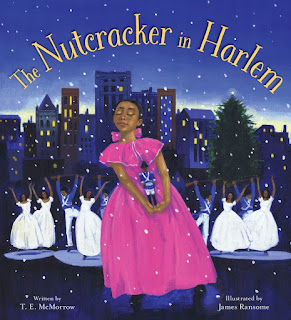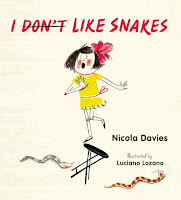Bring the Japanese New Year's tradition of making and sharing mochi into your home or classroom this year. Learn more at the Asian Art Museum and the Japanese American National Museum. Make this microwave mochi and see other activies with Jasmine Toguchi.
Jasmine Toguchi, Mochi QueenJasmine's Japanese-American family is preparing for their special New Year's Day mochi-tsuki, when they pound rice to make mochi (rice cakes) with their extended family. It's a cleaning frenzy, and now Jasmine has to take orders from her bossy big sister Sophie. It's hard enough having to follow in Sophie's footsteps, but Jasmine can't even take part in making mochi until she's ten years old. This is going to be Sophie's first time helping the women shape the mochi with the women.
by Debbi Michiko Florence ; illustrated by Elizabet Vukovic
Farrar, Straus and Giroux / Macmillan, 2017
Amazon / your local library / preview on Google Books
ages 6-9
*best new book*
Suddenly, Jasmine gets an idea -- she's going to help the boys and men pound the mochi, turning the cooked rice into sticky, gooey mochi by pounding it in a stone bowl. But will she be able to lift the huge wooden mallet? Is she strong enough?
I especially love how Debbi Michiko Florence combines food, family and fun showing Japanese traditions in a familiar, modern setting. Many of my students will relate to Jasmine's feelings, trying to prove herself and to convince her family that gender stereotypes shouldn't limit her opportunities.
This chapter book reminds me of the spunk and vitality of two of my favorite series: Ivy & Bean and Ruby Lu. As Michele Knott points out in her review, it supports developing readers with having one main storyline with a clear problem that Jasmine tries to solve. Short chapters with frequent illustrations move the plot along. Relatable situations help readers connect with Jasmine and understand her feelings and motivations.
Jasmine Toguchi is an outstanding new chapter book series; Jasmine Toguchi, Super Sleuth is already out and two more books come out this spring/summer. Look for other chapter books and early readers in the 2017 Nerdies: Early Readers & Chapter Books post.
The review copy was kindly sent by the publisher, Macmillan. If you make a purchase using the Amazon links on this site, a small portion goes to Great Kid Books. Thank you for your support.
©2017 Mary Ann Scheuer, Great Kid Books










































